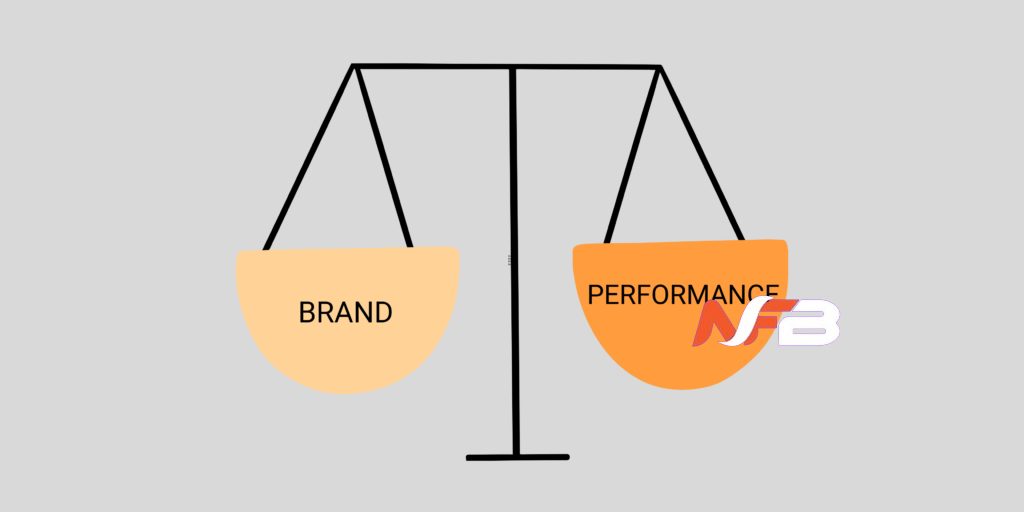Brand Marketing vs Performance Marketing: Which to Choose? Key Differences
In the ever-evolving landscape of digital marketing, advertisers are often faced with a critical decision: should they focus on brand marketing or performance marketing? Understanding the key differences between these two approaches is essential for developing an effective strategy that aligns with your business goals and maximizes your return on investment (ROI). In this article, we’ll delve into the core distinctions, benefits, and considerations of brand marketing vs performance marketing, helping you make an informed choice for your advertising efforts.
What is Brand Marketing?
Brand marketing is a long-term strategy aimed at building a strong, recognizable brand. It focuses on creating an emotional connection with the target audience, enhancing brand awareness, loyalty, and overall perception. The primary objectives of brand marketing include:
- Building Brand Equity: Establishing a brand’s reputation and value over time.
- Creating Emotional Connections: Engaging customers on an emotional level to foster loyalty.
- Enhancing Recognition: Making the brand easily identifiable and memorable.
> Key Strategies in Brand Marketing
- Content Marketing: Creating valuable, relevant content to attract and engage the target audience.
- Social Media Presence: Leveraging platforms like Facebook, Instagram, and Twitter to build a community and interact with followers.
- TV and OTT Advertising: Utilizing connected TV advertising and OTT advertising to reach audiences in their living rooms with engaging, high-quality ads.
- Sponsorships and Partnerships: Associating the brand with popular events or influencers to increase visibility.
> Metrics to Measure Success
Unlike performance marketing, brand marketing often deals with qualitative metrics, such as:
- Brand Awareness: Measured through surveys and brand recall tests.
- Brand Loyalty: Gauged by repeat purchase rates and customer feedback.
- Brand Sentiment: Analyzed through social listening and sentiment analysis tools.
What is Performance Marketing?
> Definition and Objectives
Performance marketing is a data-driven approach focused on driving specific actions, such as clicks, conversions, and sales. It’s a short-term strategy that emphasizes measurable outcomes and ROI. The main objectives include:
- Generating Leads: Acquiring new prospects through targeted campaigns.
- Driving Conversions: Encouraging actions like form submissions, downloads, or purchases.
- Maximizing ROI: Ensuring every dollar spent leads to measurable results.
> Key Strategies in Performance Marketing
- Search Engine Marketing (SEM): Utilizing paid search ads to target users actively searching for related products or services.
- Display Advertising: Using banner ads and retargeting to reach potential customers across various websites.
- Social Media Advertising: Running targeted ads on platforms like Facebook, LinkedIn, and Instagram to drive specific actions.
- Programmatic Advertising: Leveraging automated, data-driven methods to buy ad space in real-time, optimizing for performance.
- Connected TV Advertising: Implementing targeted ads on connected TV platforms to drive immediate actions from viewers.
> Metrics to Measure Success
Performance marketing relies heavily on quantitative metrics, such as:
- Click-Through Rate (CTR): The percentage of users who click on an ad.
- Conversion Rate: The percentage of users who complete the desired action.
- Cost Per Acquisition (CPA): The cost associated with acquiring a new customer.
- Return on Ad Spend (ROAS): The revenue generated for every dollar spent on advertising.
Key Differences Between Brand Marketing and Performance Marketing
> Time Horizon
- Brand Marketing: Focuses on long-term goals, aiming to build a lasting brand presence.
- Performance Marketing: Concentrates on short-term goals, driving immediate actions and measurable results.
> Metrics and Measurement
- Brand Marketing: Uses qualitative metrics like brand sentiment and awareness.
- Performance Marketing: Relies on quantitative metrics such as CTR, conversion rate, CPA, and ROAS.
> Approach and Strategy
- Brand Marketing: Employs a broad, holistic approach to build brand equity and emotional connections.
- Performance Marketing: Utilizes a targeted, data-driven approach to achieve specific, measurable outcomes.
> Budget Allocation
- Brand Marketing: Often requires a larger upfront investment with the expectation of long-term returns.
- Performance Marketing: Typically allows for more controlled, flexible spending based on immediate performance.
Choosing Between Brand Marketing and Performance Marketing
> Factors to Consider
When deciding between brand marketing and performance marketing, consider the following factors:
- Business Goals: Align your strategy with your overall business objectives. If your primary goal is to increase brand recognition and loyalty, brand marketing may be the way to go. If you aim to drive sales and leads, performance marketing could be more suitable.
- Budget: Assess your budget and how much you’re willing to invest upfront versus over time. Brand marketing usually requires more initial investment, while performance marketing can offer more immediate returns.
- Target Audience: Understand where your audience is in the buyer’s journey. Brand marketing is effective for reaching audiences at the awareness stage, while performance marketing targets those closer to making a purchase decision.
- Industry and Competition: Consider the competitive landscape of your industry. In highly competitive markets, a strong brand presence can be a significant differentiator.
Integrating Brand Marketing and Performance Marketing
For many advertisers, the best approach is not choosing between brand marketing and performance marketing but integrating both to create a cohesive strategy. Here’s how you can do that:
> Synergistic Strategies
- Unified Messaging: Ensure consistent messaging across both brand and performance campaigns to reinforce brand identity.
- Cross-Channel Optimization: Use insights from performance marketing to inform brand strategies and vice versa.
- Lifecycle Marketing: Employ brand marketing to attract and engage prospects initially, then use performance marketing to drive conversions and sales.
> Case Example
Imagine a new connected TV advertising campaign for a fitness brand. The brand marketing component might include high-quality video ads showcasing the brand’s story and values, aired during prime time to build awareness. Simultaneously, performance marketing efforts could target viewers who engaged with the TV ads through retargeted display ads or social media campaigns encouraging them to sign up for a free trial or purchase a membership.
Conclusion
In the dynamic world of digital advertising, understanding the distinctions and synergies between brand marketing vs performance marketing is crucial for crafting an effective strategy. By recognizing the strengths and limitations of each approach, advertisers can make informed decisions that align with their business goals, budget, and audience. Whether you choose to focus on building a lasting brand presence or driving immediate, measurable actions, a balanced, integrated approach often yields the best results.
In the ever-evolving landscape of digital marketing, advertisers are often faced with a critical decision: should they focus on brand marketing or performance marketing? Understanding the key differences between these two approaches is essential for developing an effective strategy that aligns with your business goals and maximizes your return on investment (ROI). In this article, we’ll delve into the core distinctions, benefits, and considerations of brand marketing vs performance marketing, helping you make an informed choice for your advertising efforts.
What is Brand Marketing?
Brand marketing is a long-term strategy aimed at building a strong, recognizable brand. It focuses on creating an emotional connection with the target audience, enhancing brand awareness, loyalty, and overall perception. The primary objectives of brand marketing include:
- Building Brand Equity: Establishing a brand’s reputation and value over time.
- Creating Emotional Connections: Engaging customers on an emotional level to foster loyalty.
- Enhancing Recognition: Making the brand easily identifiable and memorable.
> Key Strategies in Brand Marketing
- Content Marketing: Creating valuable, relevant content to attract and engage the target audience.
- Social Media Presence: Leveraging platforms like Facebook, Instagram, and Twitter to build a community and interact with followers.
- TV and OTT Advertising: Utilizing connected TV advertising and OTT advertising to reach audiences in their living rooms with engaging, high-quality ads.
- Sponsorships and Partnerships: Associating the brand with popular events or influencers to increase visibility.
> Metrics to Measure Success
Unlike performance marketing, brand marketing often deals with qualitative metrics, such as:
- Brand Awareness: Measured through surveys and brand recall tests.
- Brand Loyalty: Gauged by repeat purchase rates and customer feedback.
- Brand Sentiment: Analyzed through social listening and sentiment analysis tools.
What is Performance Marketing?
> Definition and Objectives
Performance marketing is a data-driven approach focused on driving specific actions, such as clicks, conversions, and sales. It’s a short-term strategy that emphasizes measurable outcomes and ROI. The main objectives include:
- Generating Leads: Acquiring new prospects through targeted campaigns.
- Driving Conversions: Encouraging actions like form submissions, downloads, or purchases.
- Maximizing ROI: Ensuring every dollar spent leads to measurable results.
> Key Strategies in Performance Marketing
- Search Engine Marketing (SEM): Utilizing paid search ads to target users actively searching for related products or services.
- Display Advertising: Using banner ads and retargeting to reach potential customers across various websites.
- Social Media Advertising: Running targeted ads on platforms like Facebook, LinkedIn, and Instagram to drive specific actions.
- Programmatic Advertising: Leveraging automated, data-driven methods to buy ad space in real-time, optimizing for performance.
- Connected TV Advertising: Implementing targeted ads on connected TV platforms to drive immediate actions from viewers.
> Metrics to Measure Success
Performance marketing relies heavily on quantitative metrics, such as:
- Click-Through Rate (CTR): The percentage of users who click on an ad.
- Conversion Rate: The percentage of users who complete the desired action.
- Cost Per Acquisition (CPA): The cost associated with acquiring a new customer.
- Return on Ad Spend (ROAS): The revenue generated for every dollar spent on advertising.
Key Differences Between Brand Marketing and Performance Marketing
> Time Horizon
- Brand Marketing: Focuses on long-term goals, aiming to build a lasting brand presence.
- Performance Marketing: Concentrates on short-term goals, driving immediate actions and measurable results.
> Metrics and Measurement
- Brand Marketing: Uses qualitative metrics like brand sentiment and awareness.
- Performance Marketing: Relies on quantitative metrics such as CTR, conversion rate, CPA, and ROAS.
> Approach and Strategy
- Brand Marketing: Employs a broad, holistic approach to build brand equity and emotional connections.
- Performance Marketing: Utilizes a targeted, data-driven approach to achieve specific, measurable outcomes.
> Budget Allocation
- Brand Marketing: Often requires a larger upfront investment with the expectation of long-term returns.
- Performance Marketing: Typically allows for more controlled, flexible spending based on immediate performance.
Choosing Between Brand Marketing and Performance Marketing
> Factors to Consider
When deciding between brand marketing and performance marketing, consider the following factors:
- Business Goals: Align your strategy with your overall business objectives. If your primary goal is to increase brand recognition and loyalty, brand marketing may be the way to go. If you aim to drive sales and leads, performance marketing could be more suitable.
- Budget: Assess your budget and how much you’re willing to invest upfront versus over time. Brand marketing usually requires more initial investment, while performance marketing can offer more immediate returns.
- Target Audience: Understand where your audience is in the buyer’s journey. Brand marketing is effective for reaching audiences at the awareness stage, while performance marketing targets those closer to making a purchase decision.
- Industry and Competition: Consider the competitive landscape of your industry. In highly competitive markets, a strong brand presence can be a significant differentiator.
Integrating Brand Marketing and Performance Marketing
For many advertisers, the best approach is not choosing between brand marketing and performance marketing but integrating both to create a cohesive strategy. Here’s how you can do that:
> Synergistic Strategies
- Unified Messaging: Ensure consistent messaging across both brand and performance campaigns to reinforce brand identity.
- Cross-Channel Optimization: Use insights from performance marketing to inform brand strategies and vice versa.
- Lifecycle Marketing: Employ brand marketing to attract and engage prospects initially, then use performance marketing to drive conversions and sales.
> Case Example
Imagine a new connected TV advertising campaign for a fitness brand. The brand marketing component might include high-quality video ads showcasing the brand’s story and values, aired during prime time to build awareness. Simultaneously, performance marketing efforts could target viewers who engaged with the TV ads through retargeted display ads or social media campaigns encouraging them to sign up for a free trial or purchase a membership.
Conclusion
In the dynamic world of digital advertising, understanding the distinctions and synergies between brand marketing vs performance marketing is crucial for crafting an effective strategy. By recognizing the strengths and limitations of each approach, advertisers can make informed decisions that align with their business goals, budget, and audience. Whether you choose to focus on building a lasting brand presence or driving immediate, measurable actions, a balanced, integrated approach often yields the best results.
Read Also:- Marketing Translation












Leave a Reply